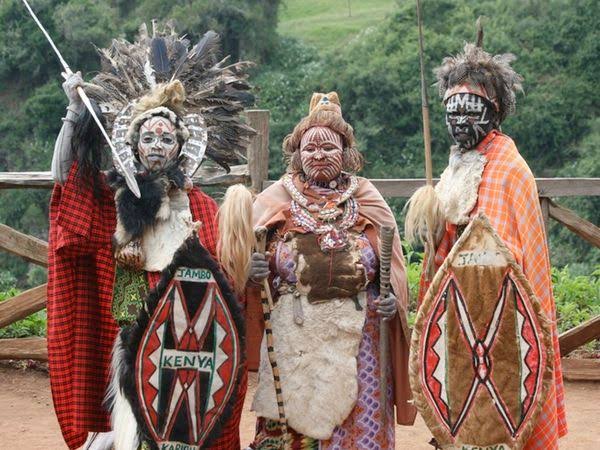Kenya is a country in the east of the African continent that is famously known for its safari and several other tourist attractions. Before it became a country due to colonialism, the people and tribes in Kenya existed independently. Most popular are the Maasai and the kikuyu.
According to the Kenyan embassy of Spain, Kenya is named after a mountain of the same name. The Kikuyu people who lived around present day Mountain Kenya referred to it as Kirinyaga or Kerenyaga, meaning ‘mountain of whiteness’ because of its snow capped peak. Mountain Kirinyaga which was the main landmark became synonymous with the territory the British later claimed as their colony. However, the name Kenya arose out of the inability of the British to pronounce Kirinyaga correctly.
 The first people to settle in Kenya were indeginous African communities who migrated from various parts of the continent. Other visitors included traders, explorers and tourists who came in from various parts of the world such as Portugal, Arabia, Roman empire, India and Greece. They visited mainly the East African Coast from as early as the first century A.D. While the majority of the visitors went back to their countries, some settled, and intermarried with the local populations giving rise to a new Swahili culture along the Coast.
The first people to settle in Kenya were indeginous African communities who migrated from various parts of the continent. Other visitors included traders, explorers and tourists who came in from various parts of the world such as Portugal, Arabia, Roman empire, India and Greece. They visited mainly the East African Coast from as early as the first century A.D. While the majority of the visitors went back to their countries, some settled, and intermarried with the local populations giving rise to a new Swahili culture along the Coast.
The civilisation base of craft industries, farming, fishing and international trade gave rise to both Coastal city states such as Siu, Pate, Lamu, Malindi, Gede, Mombasa and Vanga . Islam and Kiswahili language were also introduced . The traders from overseas brought such items as clothes, beads, wines, iron weapons, porcelain and handicrafts. These were exchanged for ivory, timber, gold, copper, rhinoceros horns, animal skins and slaves.
European presence in Kenya
The first major European presence in East Africa started with the arrival of the Portuguese in the East African waters in 1498 when Vasco Da Gama’s fleet made its initial forays on its way to the East Indies. On the first voyage his only negotiations were with the ruler of Malindi and, indeed, for the next hundred years this alliance was the foundation of the Portuguese network in the region. Their quest to control and dominate the lucrative Indian Ocean trade, the conquest of several city-states along the coast, and the establishment of their dominance, lasted 200 years. But their presence was hated and resisted and there were many insurrections against them.
 For example, on the 16th August 1631, the Arab Sultan of Mombasa called Dom Jeronimo Chingulia entered the Portuguese Citadel of Fort Jesus with a band of followers through the passage of the Arches. He killed the Portuguese Captain, Pedro Leitao de Gamboa, and then gave the signal to his followers outside the Fort to set fire to the Portuguese houses in the town. There was no marked resistance and in the course of the next two weeks all the Portuguese were killed. The Portuguese were finally kicked out of the Coastal towns through a combination of local nationalisms, aided by the Omani Arabs. To ensure the Portuguese did not return, Sultan Seyyid Said of Oman moved his capital to Zanzibar and ruled the entire East African Coastline until the establishment of British rule.
For example, on the 16th August 1631, the Arab Sultan of Mombasa called Dom Jeronimo Chingulia entered the Portuguese Citadel of Fort Jesus with a band of followers through the passage of the Arches. He killed the Portuguese Captain, Pedro Leitao de Gamboa, and then gave the signal to his followers outside the Fort to set fire to the Portuguese houses in the town. There was no marked resistance and in the course of the next two weeks all the Portuguese were killed. The Portuguese were finally kicked out of the Coastal towns through a combination of local nationalisms, aided by the Omani Arabs. To ensure the Portuguese did not return, Sultan Seyyid Said of Oman moved his capital to Zanzibar and ruled the entire East African Coastline until the establishment of British rule.

